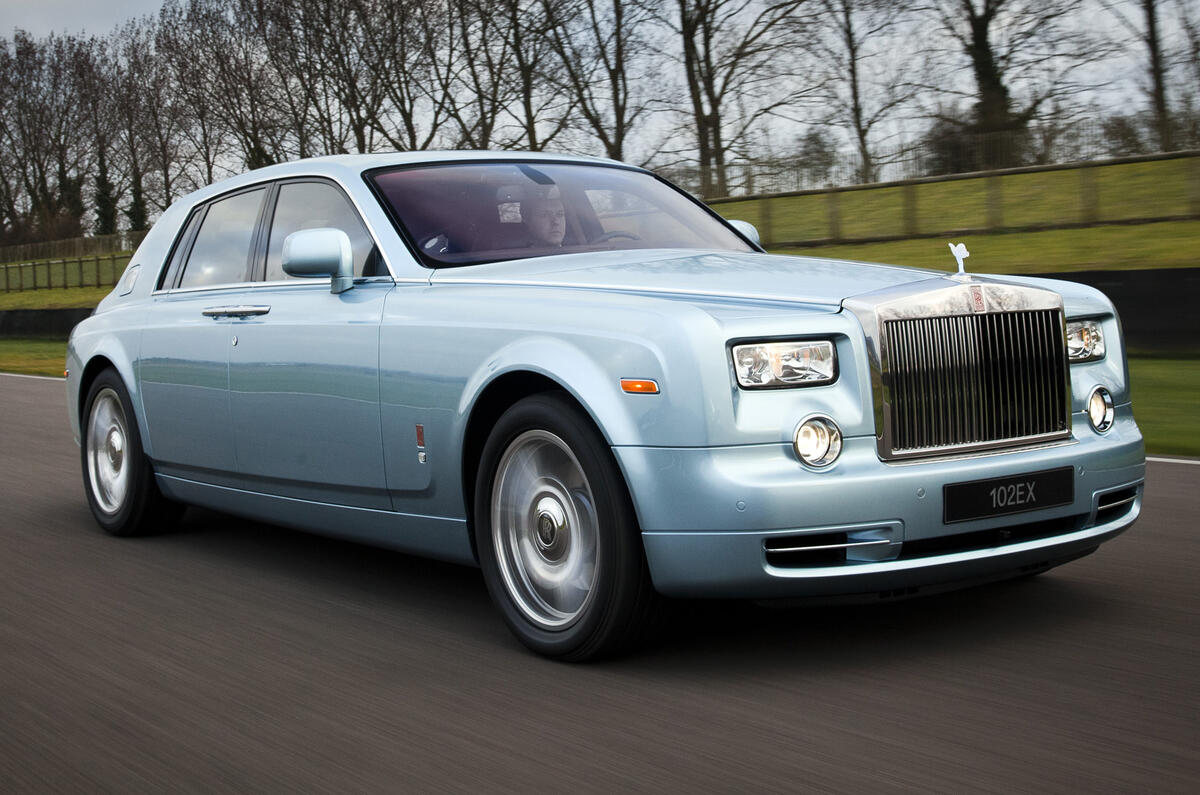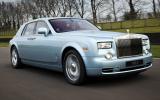What is it?
This is the Rolls Royce 102EX, or Phantom Experimental Electric. It’s a one-off engineering test-bed which sees the standard 6.75-litre V12 engine and autobox replaced by a huge battery pack and twin-electric motors driving the rear wheels.
Rolls Royce says the the 102EX will spend the rest of the year on a global tour with the aim of getting feedback from ‘owners, VIPs, media and enthusiasts’.
The 71kWh battery pack is made up of a NCM (Lithium-Nickel-Cobalt-Manganese-Oxide) pouch cells. There’s a total of 96 cells weighing 640kg, 90kg more than the combined weight of the conventional engine and transmission.
Three separate 3kW charger units are fitted to the battery pack and it takes 20 hours to recharge the huge battery. Using a three-phase electrical supply it takes eight hours for a full charge.
The 102EX also features induction charging, using an induction pad mounted under the floor. Positioning the car over a transmitter pad, installed in the road surface allows the battery to be recharged across a gap of 150mm.
This giant battery pack drives a pair of electric motors, which are mounted on the rear subframe, and housed inside water jackets, themselves chilled by coolant piped down from the radiator.
The motors drive a single ratio transmission with an integrated differential. Each motor is rated at 145kW but, more importantly, together they also deliver a whopping 590lb ft of torque from standstill. Although the power from the motors is 48kW down on the equivalent power from the V12, the torque peak is 59lb ft, or 11 percent, up.
The 102EX’s drivetrain offers two strengths of retardation once the driver lifts off the accelerator pedal. ‘Standard’ offers 120Nm of regenerative braking force and ‘Low’ a more neck-testing 210Nm.
What’s it like?
In truth, this electric drivetrain delivers on the Rolls Royce promise more completely than any internal combustion engine could ever manage.
Although the standard-issue V12 engine is a refined as any engine installation on sale today, and does a very impressive job of mustering up the required rising wall of near-silent torque, it’s the way that the torque of the electric motors move the 102EX down the road that is the game-changer.
The surge of forward motion is so uncannily seamless and relentless that your first instinct is that the Phantom’s V12 motor is rendered instantly redundant.
There are two big advantages over internal combustion engines, even one as refined as the Phantom’s V12. Firstly, at speed and under hard acceleration, you can really sense the lack of mechanical reciprocation behind the bulkhead. The second is the unhindered stream of torque, not just because of the characteristics of electric motors, but because of the lack of ratio swapping.
On the winding backroads of West Sussex, the car was quite uncannily relaxing. Ironically, in a car where the owner might spend all of his time in the rear seat, the pleasure is delivered to the driver.
That’s not to say that the Phantom is much of a B-road animal. The steering on this one-off was rather over-light and the position of the front inside wheel wasn’t quite obvious. However, the ride quality over sudden potholes was slightly better in the 102EX than it was in the standard-issue Phantom I tried back-to-back with the electric car.





















Join the debate
Add your comment
Re: Rolls-Royce Phantom 102EX
The only way you could make Rolls move smoother is to make it fly or hover,and we know that's just mad, totally.
Re: Rolls-Royce Phantom 102EX
What customers do want is the traditional delivery of luxury, style and effortless power. Whilst the Phantom isn’t really short in any of these areas the move to such a power system adds to the effortless delivery of power.
Some people will believe RR is going green. No it isn’t, it’s developing a perfect match of power, smooth delivery and luxury.
Re: Rolls-Royce Phantom 102EX